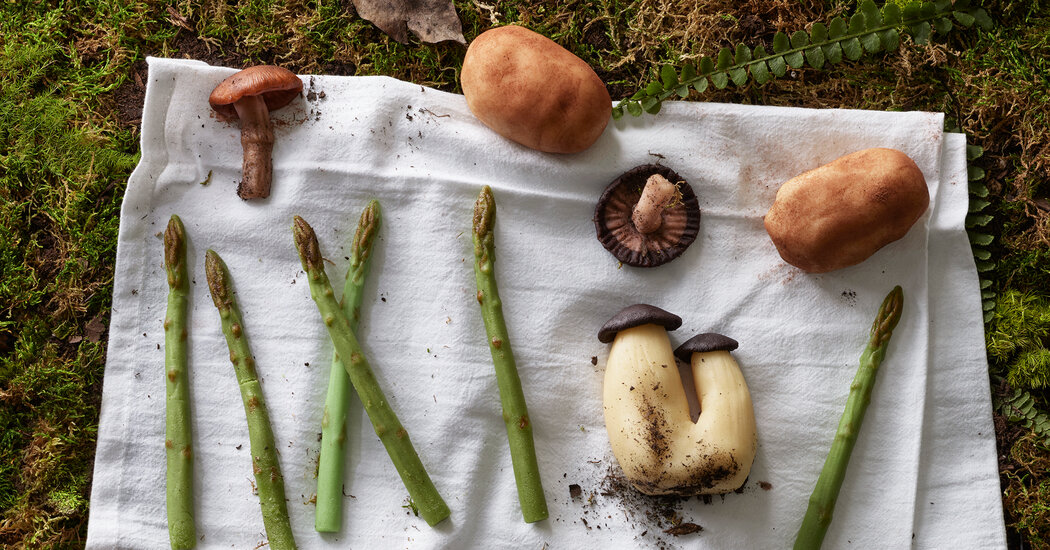At the wedding banquet of King Henry IV and Joan of Navarre in 1403, showstopping sugar sculptures were carted out after each of the six courses. Some were shaped like animals; others were recreations of architectural marvels. All of them were as finely chiseled as any likeness carved from stone. Called sotelte (or “subtleties”) in England, culinary masterworks like these were traditionally concocted from a paste of sugar, ground nuts, oils and vegetable gums and gilded or painted with pigments. In Europe, the extravagant sweets first emerged in the late medieval period but, because sugar was prohibitively expensive, were found only on the tables of the wealthy until the 18th century, when the sweetener had become more widely available. Now, thanks to both technology and social media’s penchant for photogenic food, ever wilder and more wondrous treats are showing up at parties and online — trompe l’oeil confections capable not only of tricking the eye but of blowing the mind, too.
“Dessert is a remarkable medium for creativity. You just don’t have that freedom when working with a main course,” says Sam Bompas, 40, who co-founded Bompas & Parr, the London-based experience design studio, in 2007. For clients such as the luxury fashion conglomerate LVMH and the British government, Bompas and his business partner, Harry Parr, 40, have created wobbly, dollhouse-size replicas of St. Paul’s Cathedral and Buckingham Palace out of gelatin and crafted faux fruit from glow-in-the-dark ice cream. To pull off such feats, the pair employ plastic molds made with the help of 3-D printers. When they started their business 17 years ago, such machines were rare and pricey but now, says Bompas, “they’re ever more affordable, which is why I think more people are making hyperrealistic things.”
And one doesn’t even have to leave the house to see them. On the popular Netflix show “Is It Cake?,” contestants try to fool the judges by baking nearly identical confectionary renderings of items like soda cans, sneakers and handbags. On Instagram, there are creators like Frederikke Legaard, 28, a multimedia artist based in Copenhagen who posts pictures of homemade desserts that resemble everything from spring onions to a mold of her own face. She considers the taste and texture of her works to be just as important as their appearance. “For me, it’s about the experience of eating it,” she says. “When I did a cake in the shape of a lobster, I thought, ‘What would be something you’d eat with lobster?’” The result: a dill-flavored pâte sucrée with lemony mascarpone cream and gooseberry compote encased in marzipan. Legaard points out that food art demands a higher level of engagement than other media. “You can look away from a painting,” she says, “but when you put something in your mouth, it’s like the artist is going into your body.” She particularly enjoys catching diners off guard by upending their expectations about flavor. “When it looks like a cucumber but it tastes sweet, it’s a mind [expletive],” she says.
The Brooklyn-based artist Maayan Zilberman, 44, also likes to upend expectations. In January, for the opening of a Tory Burch concept store in Los Angeles, she created a series of sculptures made from a mixture of resin, shaving cream and essential oils that were meant to look like giant dollops of whipped cream. Nestled in the swirls were earrings and necklaces made from glistening candy strawberries that partygoers were encouraged to try on — and to taste. “I started making edible jewelry as a way to appreciate beautiful items without them needing to take up space,” says Zilberman, who was commissioned by Versace to make comestible rosaries and papal rings for the 2018 Met Gala in New York. But after more than eight years of whipping up such adornments, she recently started wanting to make things with a longer shelf life. Her forthcoming collection of lucite-and-enamel jewelry is made from molds very similar to the ones she uses for her edible works. “They take on new meaning when they’re intended for a lifetime of wear,” she says of the pieces. “And it’s funny because they still look like candy.”
Set design by Laila Gohar. Photo assistant: Takako Ida. Set designer’s assistant: Yukimi Nate







